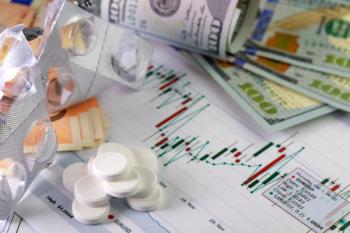
Pharmacy prices vary widely for generic heart drugs
The prices of heart failure drugs at retail pharmacies vary widely, and uninsured patients may not be able to afford them, researchers have found.
The prices of heart failure drugs at retail pharmacies vary widely, and uninsured patients may not be able to afford them, researchers found in a
The research letter, published in the November 15, 2016 issue of JAMA Internal Medicine, was led by Paul J. Hauptman, MD, a SLUCare Cardiologist and Professor of Internal Medicine at Saint Louis University School of Medicine.
Since an estimated 7.3 million Americans with cardiovascular disease are under-insured or uninsured, the researchers were concerned about the impact of recent increases in generic drug costs on the under-insured or uninsured.
“The idea for the study originated with one of our patients, a 25-year-old man with heart failure, who called the office and said he could not afford to fill a prescription for digoxin,” Hauptman said. “When I found out that a month’s supply was going to cost him $100, I couldn’t believe it. Like me, I think a lot of doctors assume that if you’re writing a prescription for a generic drug that it will be affordable - and that’s not necessarily the case.”
Paul J. Hauptman, MDAs a result, Hauptman and his team surveyed 175 pharmacies in the bi-state St. Louis region to determine what they charged uninsured customers for three generic heart failure drugs – digoxin, lisinopril, and carvedilol. The researchers received data from 153 chain store and 22 independently-owned pharmacies in 55 different zip codes over a three-week period.
They found that the 30-day cash purchase price for the three drugs ranged from $20.19 to $256.77 for the low doses of the drugs, with a median price of $67.98.The cost was between $12 and $397.58 for the high doses of the drugs, with a median price of $70.68. Prices were similar for 90-day supplies.
“Digoxin, the oldest cardiovascular medication available, was paradoxically the most expensive,” Hauptman wrote in the research letter.
Because patients with heart failure commonly take five or six medications, those in low income areas-- who may be at highest risk of complications from heart failure-- may not have convenient access to multiple pharmacies to price shop for the cheapest medication, leaving them vulnerable to lapses in adherence, Hauptman said.
The study did not find a link between price, area, and type of pharmacy. The pharmacies’ location also did not determine price of the generic drugs, since zip code and median income clusters in the region did not demonstrate differences.
The researchers also found that prices varied even at stores owned by a single major pharmacy chain. “Only one chain had consistent pricing across its stores,” Hauptman wrote. In addition, the retail pharmacy--rather than drug dose, curation of therapy, pharmacy ownership, or pharmacy location – was the primary cost driver.
Mail order pharmacies were not included, because they are not an available option for most uninsured and under-insured patients, the researchers said.
There may be health policy implications of this research in the future. “Generic drugs for heart failure show wide variability in pricing at the retail pharmacy level,” Hauptman wrote. “The precise reasons for this, and the implications for adherence and subsequent clinical outcomes, require further study from both scientific and policy standpoints.”
Newsletter
Pharmacy practice is always changing. Stay ahead of the curve with the Drug Topics newsletter and get the latest drug information, industry trends, and patient care tips.















































































































